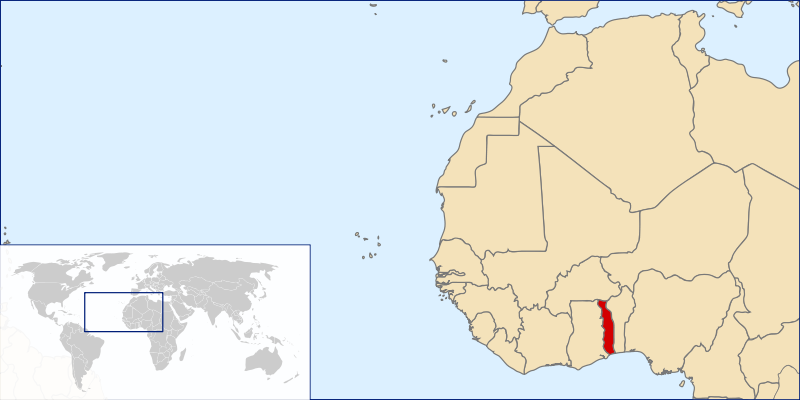 The Togolese Republic, often known as Togo, is a country in West Africa bordered by Ghana to the west, Benin to the east and Burkina Faso to the north. It extends south to the Gulf of Guinea, on which the capital Lomé is located.
The Togolese Republic, often known as Togo, is a country in West Africa bordered by Ghana to the west, Benin to the east and Burkina Faso to the north. It extends south to the Gulf of Guinea, on which the capital Lomé is located.
Togo covers an area of approximately 57,000 square kilometres (22,000 sq mi) with a population of approximately 6.7 million. Togo is a tropical, sub-Saharan nation, highly dependent on agriculture, with a climate that provides good growing seasons. The official language of Togo is French. However, there are many other languages spoken, particularly those of the Gbe family. The largest religious group in Togo are those with indigenous beliefs, but there are significant Christian and Muslim minorities. Togo is a member of the United Nations, African Union, Organisation of the Islamic Conference, South Atlantic Peace and Cooperation Zone, La Francophonie and Economic Community of West African States.
From the 11th to the 16th century, various tribes entered the region from all directions. From the 16th century to the 18th century, the coastal region was a major trading centre for Europeans in search of slaves, earning Togo and the surrounding region the name “The Slave Coast”. In 1884, Germany declared a protectare over Togoland. After World War I, rule over Togo was transferred to France. Togo gained its independence from France in 1960. In 1967, Gnassingbé Eyadéma led a successful military coup, after which he became president. At the time of his death in 2005, Eyadéma was the longest-serving leader in modern African history, after having been president for 38 years. In 2005, his son Faure Gnassingbé was elected president.
Togo’s culture reflects the influences of its many ethnic groups, the largest and most influential of which are the Ewe, Mina, Tem, Tchamba andKabre.
French is the official language of Togo. The many indigenous African languages spoken by Togolese include: Gbe languages such as Ewe,Mina, and Aja; Kotokoli, Akessele, Bassar, Losso Kabiyé; and others.
Despite the influences of Christianity and Islam, over half of the people of Togo follow native animistic practices and beliefs.

Notes from Wikipedia








